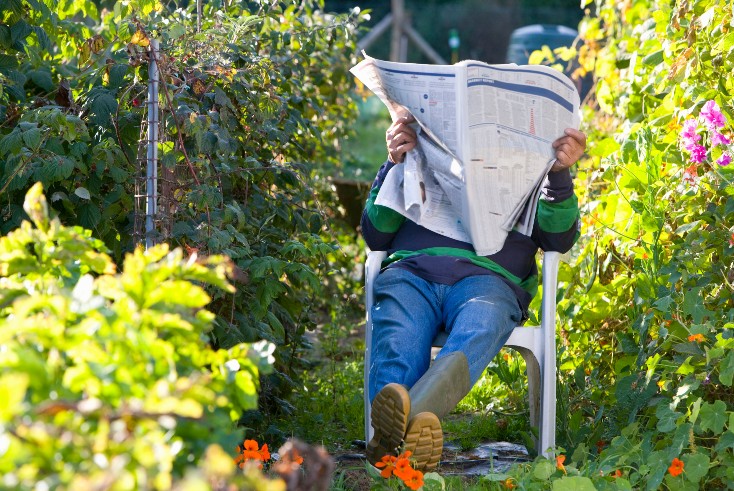Want to make real progress on sustainability? Target the middle shades of green

Opinion
Climate-conscious newsbrand readers offer an opportunity for brands to appeal to those eager to help save the planet without suffering a financial hit.
Earth is on its “final warning”: that’s the verdict from the latest report from the Intergovernmental Panel on Climate Change. Experts have warned about climate change for decades, but now it’s more vital than ever to act — whether that’s governments, organisations, brands or individuals.
As a society, we’re finally starting to take sustainability seriously. Whereas the climate crisis often took a back seat in people’s thoughts during the 2008 financial crisis and the Covid pandemic, the current cost-of-living crisis has seen a smaller decline in interest in the environment. Climate concern is becoming mainstream.
Most consumers aren’t on either end of the spectrum
But how does mainstream interest look in practice? Research company Trajectory Trends segmented consumers into “shades of green“. The index identifies how sustainability affects purchase decisions, with consumers measured from lighter to darker shades. While dark greens tend to be the target consumer of many sustainable products, this is a niche group that lives sustainably at all costs. On the other hand, light greens are those who prioritise everything else over sustainability.
However, most consumers don’t fit into those two boxes; it’s this middle group that is most valuable for those brands who can sway people to make more eco-friendly choices with the right combination of quality, price and sustainability. What’s more, it’s where sustainable brands are likely to see the largest customer growth and our recent news industry collaboration research indicates it’s the group in which a large percentage of readers can be found—including myself.
I first learnt about the dangers of climate change at school. I remember doing revision about it for my GCSEs — we were taught our future was a scary prospect if I didn’t recycle everything. However, fast forward 15 years and it’s clear my naïve attempt to recycle our way out of the crisis isn’t working. Since those days, my education has come from enrolling in Ad Net Zero’s training scheme and championing sustainability internally as part of my role at Newsworks.
As a result, in my everyday life, I now look for brands that deliver quality in a sustainable way. I’ve tried shampoo bars, but because they were harder to find on my weekly shop and the quality wasn’t great, I went back to bottles.
However, I’ve also had positive experiences. I’ve bought car insurance that offsets my miles, a decision I made based on value for money and the environment (which makes me feel good too). I’ve become an avid user of second-hand marketplace Vinted, much to my partner’s delight after trying to get me to halve my wardrobe. First, the brand was a place for me just to make some “free” cash, but since then I’ve become a thrift shopper, using it as a trading platform instead (to my partner’s disappointment).
Making a difference without wholesale lifestyle changes
According to our research, newsbrand readers are increasingly inhabiting this space. They’re an audience which understands the need for us all to live a sustainable lifestyle, with 96% of readers making positive environmental choices every day.
However, a closer look at the data shows these behaviours aren’t revolutionary: it’s an audience in which almost seven in 10 readers are recyclers and almost six in 10 are reducing energy use. But they’re not quite ready to adopt veganism to save the world just yet, with less than a quarter currently reducing meat consumption and less than one in six consuming fewer dairy products. They’re looking for meaningful ways to make a difference without the wholesale lifestyle changes they might associate with “darker green” products.
This audience represents a large opportunity for brands. With 70% agreeing journalism has an important role in educating people about climate change, newsbrands are a powerful space to reach consumers eager to support brands with a climate-conscious ethos. 58% say they were more favourable towards eco-friendly brands, while 56% said they could be swayed by brands with sustainable alternatives. However, with 75% of newsbrand readers feeling the squeeze, marketers should remember the need to balance sustainability with price and quality — comparatively few readers interested in sustainability are “dark green”.
‘Different responsibilities and different opportunities to bring about change’
Brands like Vinted play right into what this sustainability-curious audience likes: eager to help save the planet without suffering a financial hit. What’s more, we’re seeing a sea change in popular culture, too. It’s no longer a fashion crime to wear an outfit in public more than once. Popular podcasters Vogue Williams and Joanne McNally regularly talk about swapping clothes, something that would have seen them ridiculed for in the past. These cultural changes are opportunities for brands to target mainstream audiences and put us on a more sustainable path.
With almost half of the world’s population now living in regions highly vulnerable to climate change, it’s time for us to think about what we as both an advertising industry and individuals must do to make meaningful changes for our planet’s future. As IPCC chair Hoesung Lee said in his organisation’s report: “We live in a diverse world in which everyone has different responsibilities and different opportunities to bring about change.”
 Jennifer Schooling is business analyst at national newspaper marketing body Newsworks.
Jennifer Schooling is business analyst at national newspaper marketing body Newsworks.




